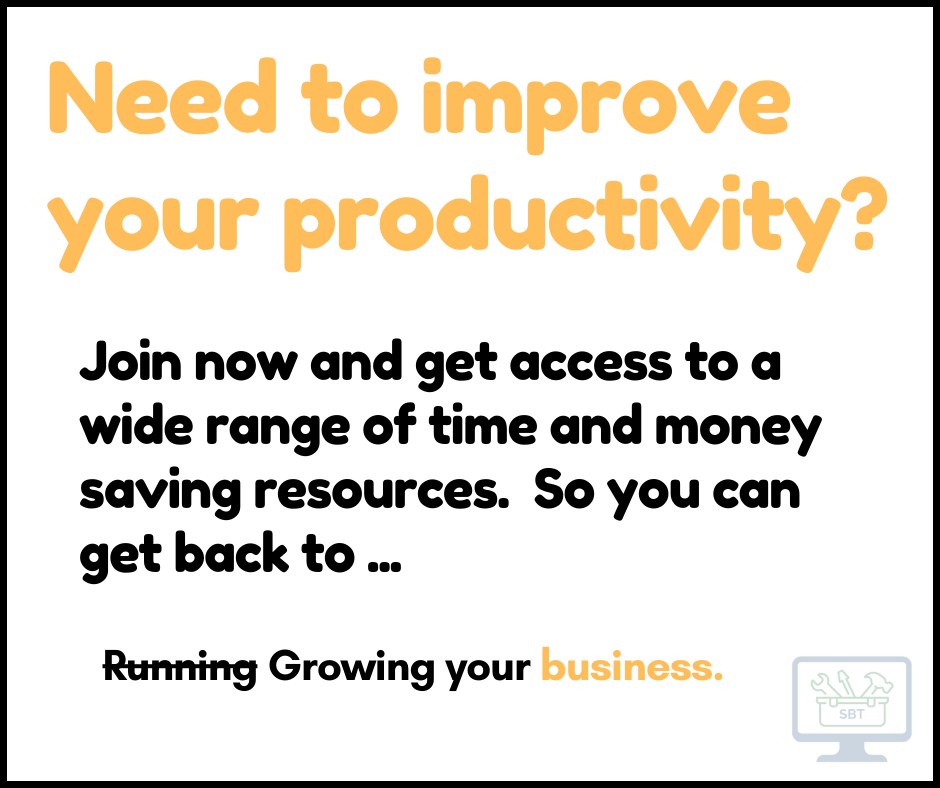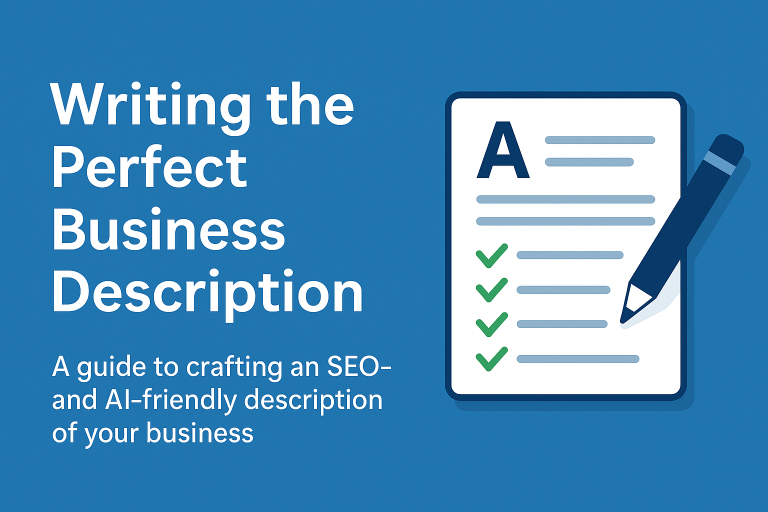At SmallBizToolbox, we understand that choosing the right business setup is crucial for success. Whether you’re wondering how to market your business online, from home, or in a physical location, each option has its unique advantages and challenges.
Types of Business Locations
Your choice of business location shapes how you interact with customers and manage operations. Consider the following options:
| Location Type | Description |
|---|---|
| Online | Accessible from anywhere, often with lower overhead costs. |
| Home-Based | Operated from your residence, offering flexibility and savings. |
| Physical Location | A dedicated storefront, providing direct customer interaction. |
| Mobile Business | Traveling services that meet customers in various locations. |
| Virtual Office | Professional address without a physical space for operations. |
You must weigh each option against your business goals and lifestyle, ensuring the best fit for your needs.
In this post, we’ll explore the pros and cons of these three business models to help you make an informed decision. We’ll also share practical tips and real-world examples to guide you in selecting the best approach for your venture.
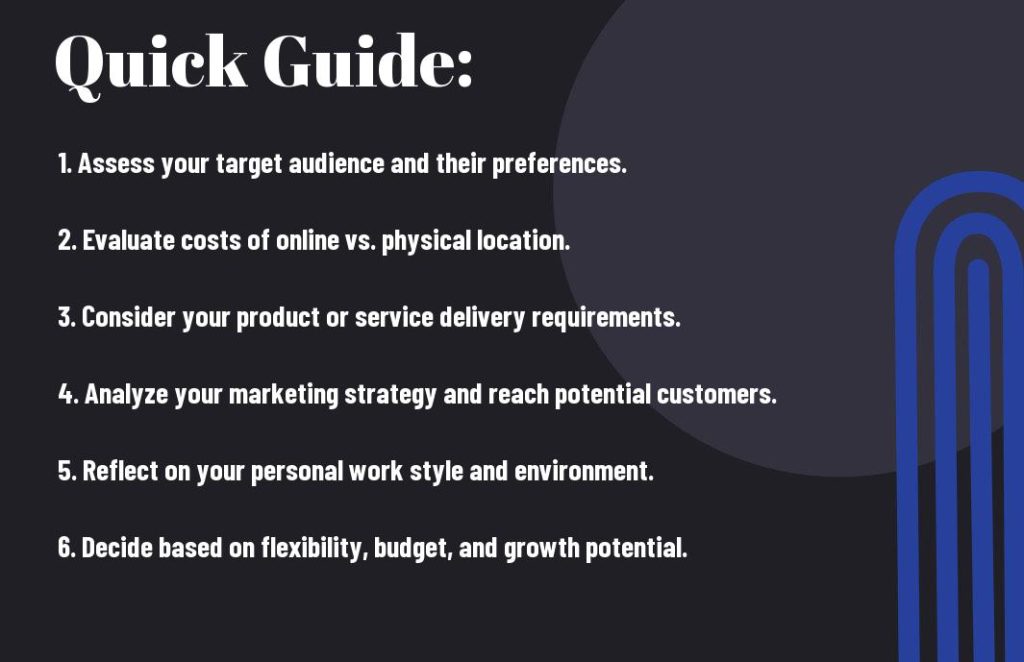
Why Run Your Business Online?
The digital age has transformed business operations, making online ventures a smart strategy for growth and success. Let’s explore the compelling reasons to embrace the digital landscape for your business.
Lower Overhead, Higher Profits
Online businesses slash expenses significantly. Without a physical storefront, you eliminate costs like rent, utilities, and maintenance. According to Bazaarvoice, 30 percent of consumers prefer spending money online, while 41 percent prefer in-store spending, and 29 percent say their preferences are equal.
Reach a Global Audience
The internet demolishes geographical barriers, opening up worldwide markets. Statista projects global e-commerce sales to hit $6.38 trillion by 2024. This vast market potential dwarfs what most local physical businesses can access.
Leverage Powerful E-commerce Platforms
You don’t need to be a tech expert to start. User-friendly platforms like Shopify, WooCommerce, and BigCommerce offer robust features for quick online store setup. These tools handle everything from inventory management to secure payments, simplifying your entry into online selling.
Automate and Scale
Online businesses benefit from a wide array of automation tools. Email marketing software (like Mailchimp) and customer relationship management (CRM) systems (such as HubSpot) help you scale operations without proportionally increasing workload. Salesforce reports that businesses using CRM software can boost sales by up to 29%.
Navigate the Challenges
While the benefits abound, online businesses face unique hurdles. Cybersecurity stands out as a major concern, with Accenture reporting that small businesses are the target of 43% of cyber attacks. Invest in robust security measures and educate yourself about online threats to protect your business.
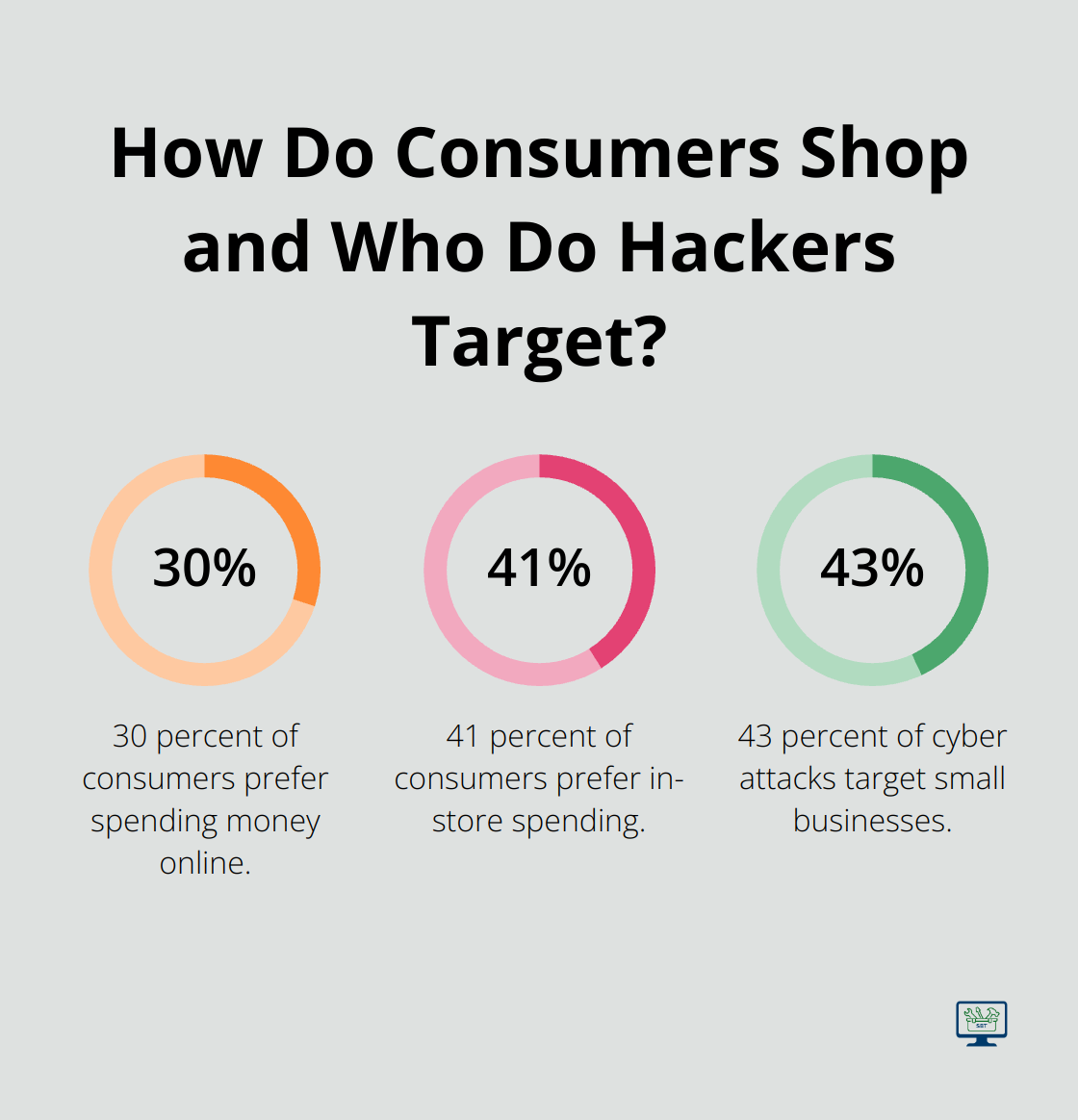
Building customer trust presents another challenge. Without face-to-face interactions, establishing credibility can be tougher. However, showcasing customer reviews, obtaining security certifications, and providing excellent customer service can help overcome this obstacle.
Success Stories That Inspire
Consider Gymshark’s journey. This fitness apparel company started with a 19-year-old founder, Ben Francis, and a group of his high school friends. By leveraging social media marketing and influencer partnerships, they’ve grown into a $1+ billion valuation company with over 9 million Instagram followers.
Beardbrand offers another inspiring tale. Beginning as a YouTube channel and blog about beard care, they focused on content marketing and community building. This strategy propelled them to multi-million dollar e-commerce success.
These stories illustrate the remarkable potential of online businesses. With the right strategy and tools, the digital realm offers unprecedented opportunities for growth and innovation.
As we shift our focus to home-based businesses, you’ll discover how this model combines the benefits of online operations with the comfort and flexibility of working from your personal space. For more insights and practical strategies to unlock your small business’s potential, check out our range of eBooks.
Home Office Hustle
The Rise of Home-Based Businesses
The COVID-19 pandemic sparked a significant shift in business operations. The U.S. Small Business Administration reports a 49% increase in home-based enterprises since 2020. This trend highlights the growing appeal of running a business from the comfort of one’s home.
Creating a Productive Workspace
A well-equipped home office forms the foundation of a successful home-based business. FlexJobs found that home-based workers can save up to $11,000 annually on expenses like commuting and work attire. To capitalize on these savings, you need to set up an efficient workspace.
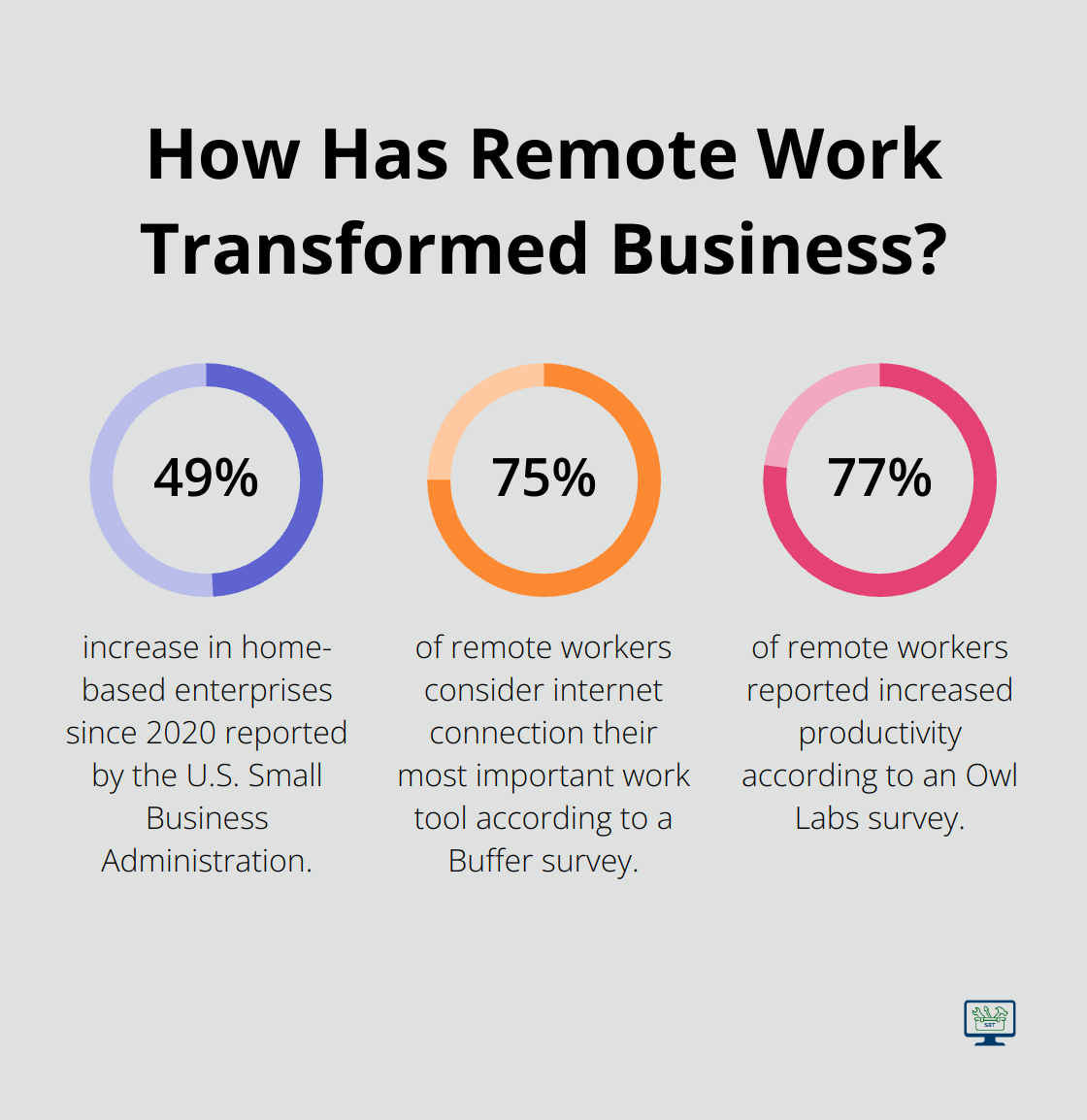
Choose a quiet area with ample natural light for your office. Invest in furniture designed to support your body during long work hours. An adjustable chair that provides lumbar support and a desk at a suitable height can significantly improve your comfort and productivity.
Reliable high-speed internet is non-negotiable for home-based businesses. A Buffer survey revealed that 75% of remote workers consider internet connection their most important work tool. Don’t compromise on this essential resource.
Legal Considerations for Home-Based Businesses
Operating a business from home comes with unique legal challenges. Starting a home-based business is like starting any other business. You will need business and tax registrations.
Consider forming an LLC or corporation to protect your personal assets. This step provides a layer of legal protection if your business faces any issues.
Insurance is another critical consideration. Your homeowner’s policy likely won’t cover business-related incidents. Look into a business owner’s policy that combines property and liability coverage.
Balancing Work and Personal Life
One of the biggest challenges of running a home-based business is maintaining a healthy work-life balance. An Owl Labs survey found that 77% of remote workers reported increased productivity, but many struggle to “switch off” at the end of the workday.
Set clear boundaries between work and personal time. Establish regular working hours and adhere to them. Use time management techniques (like the Pomodoro method) to maintain focus during work hours.
Schedule breaks and physical activity throughout your day. A study in the Journal of Occupational Health Psychology found that short breaks during the workday can significantly reduce stress and boost productivity.
As we transition to discussing physical business locations, it’s important to note that each business model has its unique advantages. While home-based businesses offer flexibility and cost savings, physical locations provide different opportunities for growth and customer engagement. Let’s explore how a brick-and-mortar presence can impact your business strategy.
Why Open a Physical Store
The Power of In-Person Experiences
Physical stores offer unique advantages that can complement or outshine online operations. A CalTech study found that consumers assign value to goods differently depending on how they are presented, highlighting the significant impact of sensory experiences on purchasing decisions.
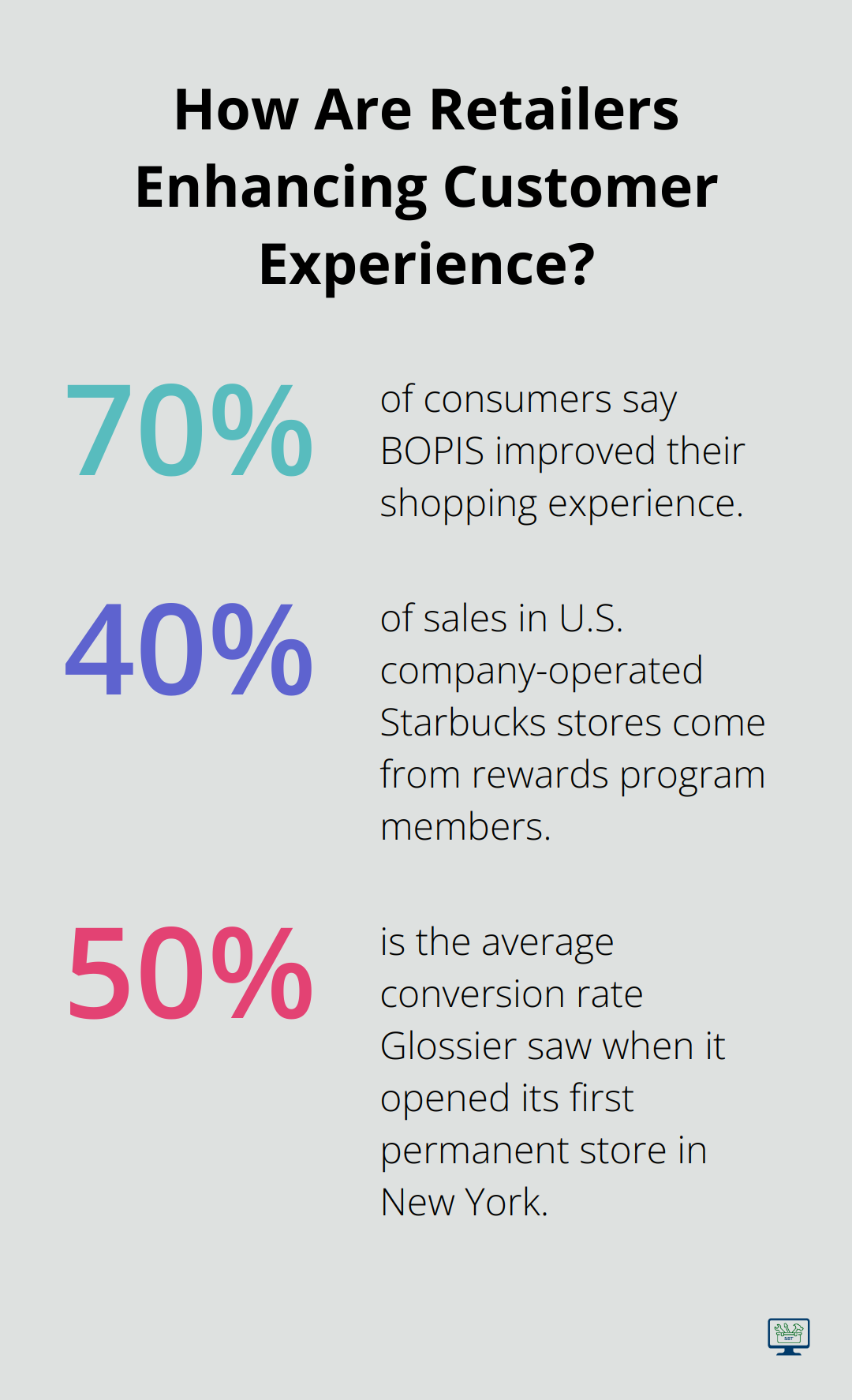
Warby Parker, the eyewear company, exemplifies this trend. They started as an online-only business but have since opened over 100 physical stores. These locations serve as showrooms and hubs for eye exams, which significantly boost customer engagement and sales.
Building Trust and Brand Loyalty
Face-to-face interactions foster trust and loyalty. A PwC study revealed that good customer experience leaves people feeling heard and appreciated, minimizing friction and maintaining a human element. Physical stores bridge this gap, allowing for personalized service that can transform casual browsers into loyal customers.
Try to implement a loyalty program that rewards in-store visits. Starbucks’ rewards program has been a major driver of repeat business, with members accounting for 40% of sales in U.S. company-operated stores.
Omnichannel Opportunities
Physical stores can function as fulfillment centers for online orders, offering options like buy online, pick up in-store (BOPIS). The National Retail Federation reports that 70% of consumers say BOPIS improved their shopping experience. This integration of online and offline channels can significantly boost sales and customer satisfaction.
The Cost Factor
Opening a physical store involves substantial costs, but it’s important to weigh these against potential benefits. Rent often represents the biggest expense, with office space ranging from $8 to $23 per square foot (not including utilities), according to QuickBooks.
However, a well-chosen location can drive foot traffic and boost sales. When Glossier opened its first permanent store in New York, it saw an average conversion rate of 50% – significantly higher than the e-commerce average of 2-3%.
Choosing the Right Location
Location can make or break a physical store. Consider factors like foot traffic, accessibility, and proximity to your target audience. Tools like Placer.ai offer foot traffic analytics to help you make data-driven decisions.
Test different locations before you commit to a long-term lease. Pop-up stores or short-term leases can provide valuable insights into customer behavior and location viability without the long-term financial commitment.
Tips for Success
Now, to excel in your chosen business model, consider the following tips:
- Clarify your goals and mission.
- Stay organized and prioritize tasks.
- Engage with your audience regularly.
- Utilize technology to streamline processes.
- Keep learning and adapting to new trends.
After implementing these strategies, you’ll set yourself up for enduring success.
Final Thoughts
Choosing the right business model shapes your entrepreneurial journey. Online businesses offer global reach and scalability, while home-based operations provide flexibility and cost savings. Physical stores create tangible experiences that foster strong customer relationships and brand loyalty. Each approach presents unique advantages and challenges for how to market your business effectively.
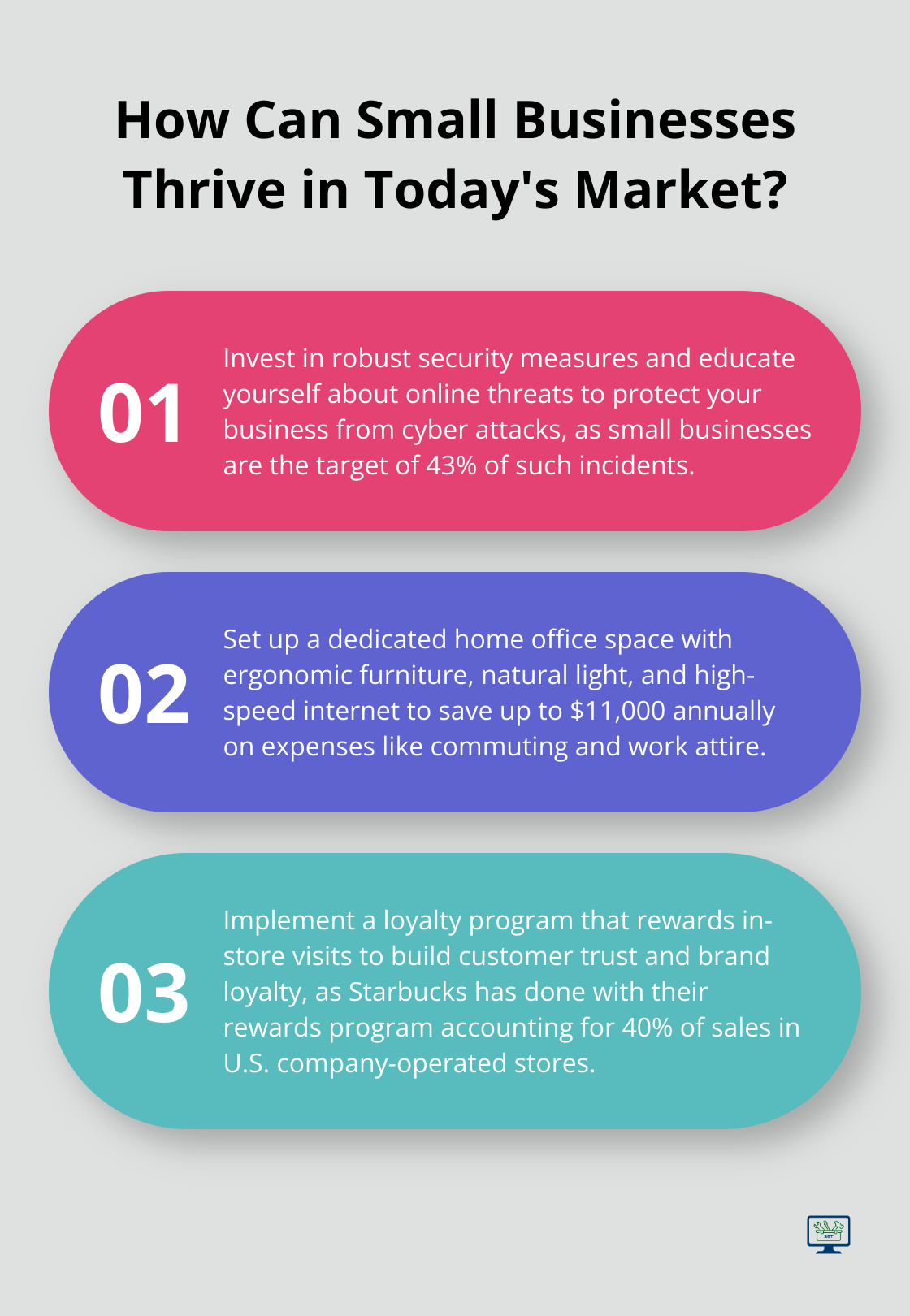
Many successful businesses adopt hybrid models that combine elements of online, home-based, and physical operations. This approach maximizes the benefits of each model while mitigating their respective drawbacks. The key is to align your choice with your specific goals, target audience, and available resources.
At SmallBizToolbox, we understand the complexities of these decisions. Our comprehensive suite of tools and resources supports your business growth, regardless of the model you choose. We provide expertise and tools to help you thrive in today’s competitive business landscape (including AI-driven content creation, SEO optimization, and social media aids).
FAQ
Q: What are the advantages of running my business online?
A: Running a business online offers several benefits, such as reduced overhead costs since you don’t need to rent a physical space. Additionally, you can reach a global audience, allowing for the potential to grow your customer base significantly. Online businesses also provide flexibility in terms of working hours and location, enabling you to manage your operations from virtually anywhere.
Q: What are the challenges of operating a business from home?
A: Operating a business from home can present a few challenges. One common issue is separating work-life balance, making it difficult to stay focused and productive. Additionally, home-based businesses may face limitations in terms of space, which can restrict inventory storage or the ability to hold meetings. Networking opportunities might also be fewer in a home setting compared to a physical office or retail location.
Q: How do I decide if a physical location is the right choice for my business?
A: Deciding on a physical location depends on several factors. Consider the nature of your business: if it relies on foot traffic, like a retail store or a restaurant, a physical space could be vital. Evaluate the cost of leasing or purchasing property, as well as the target audience in that area. Additionally, think about the services you provide; some businesses benefit from being in a shared workspace or coworking environment which allows for collaboration and networking.
How useful was this Resource?
Click on a star to rate it!
Average rating 0 / 5. Vote count: 0
No votes so far! Be the first to rate this post.
We are sorry that this post was not useful for you!
Let us improve this Resource!
Tell us how we can improve this Resource?

